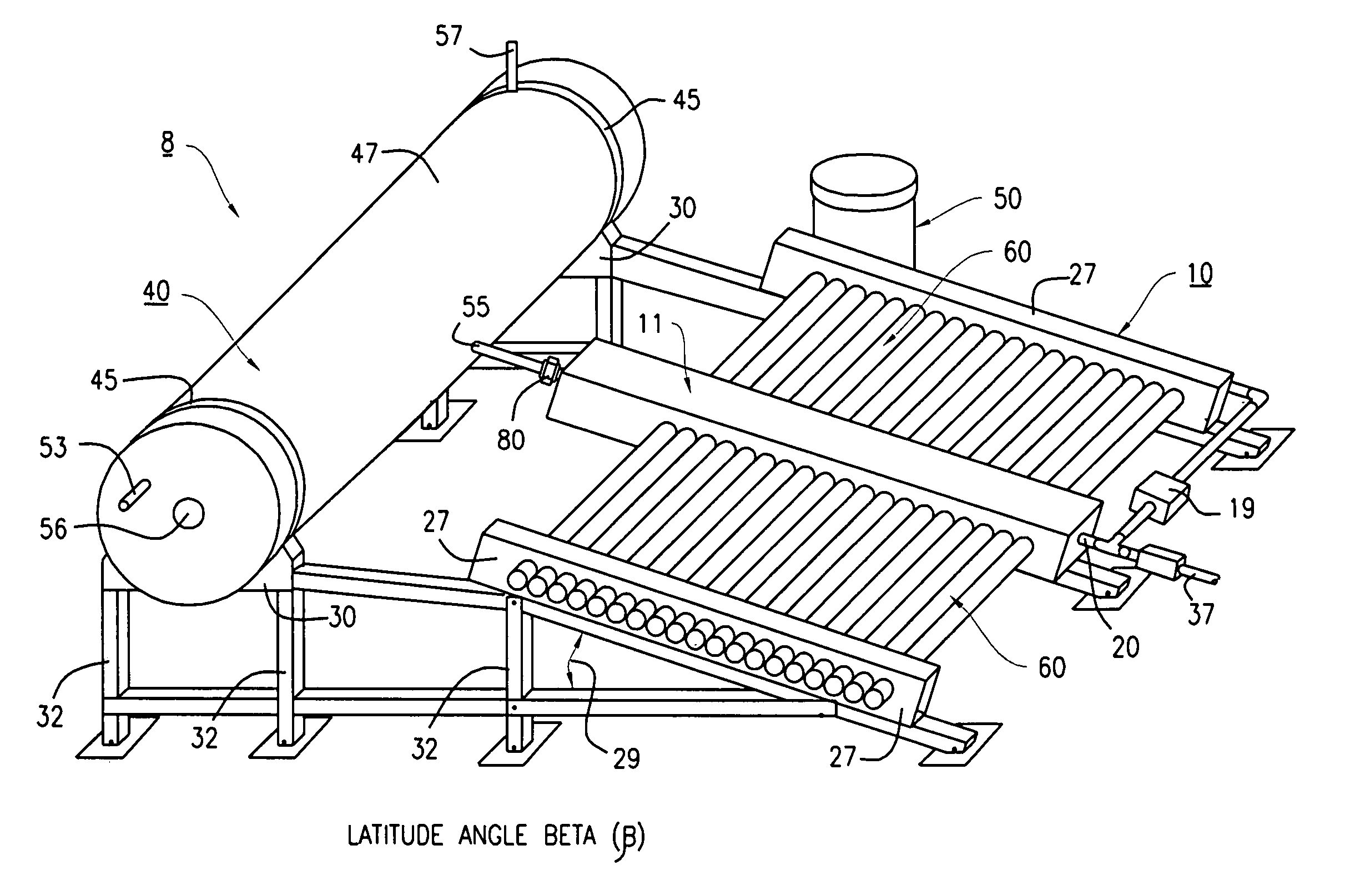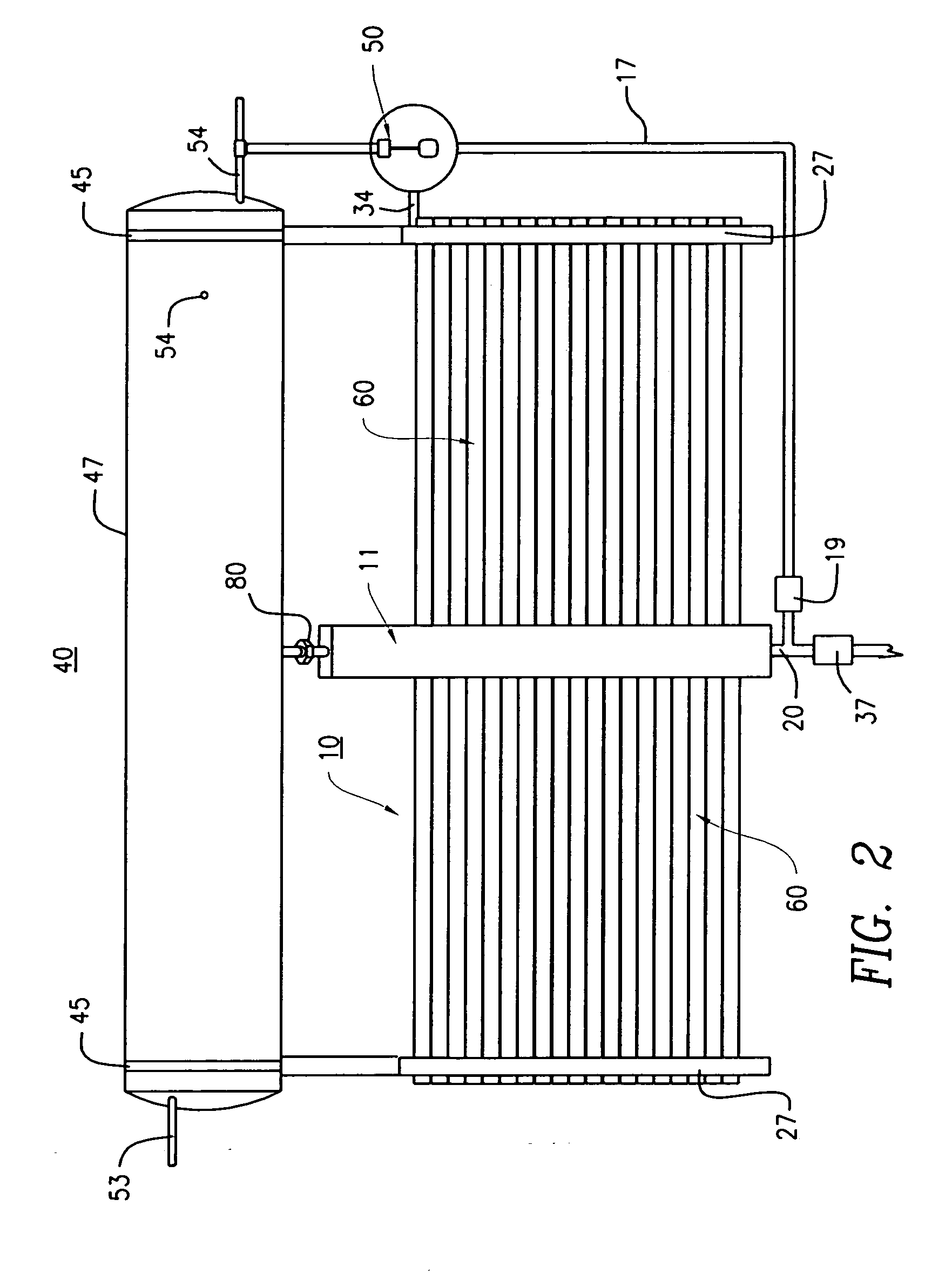Integrated solar liquid heater, distiller and pasteurizer system
a solar liquid heater and distiller technology, applied in vacuum distillation separation, lighting and heating apparatus, separation processes, etc., can solve the problems of system failure to take full advantage of the heat pipe concept, system not designed to take advantage of evacuated solar collectors and relatively high efficiency associated, and less efficient solar systems in the field of integrated solar heating and solar distilling systems. , to achieve the effect of enhancing the capacity of the tank to deform elastically, reducing the formation of scale, and increasing the density of stored energy
- Summary
- Abstract
- Description
- Claims
- Application Information
AI Technical Summary
Benefits of technology
Problems solved by technology
Method used
Image
Examples
Embodiment Construction
[0048] The integrated solar heater, distiller and pasteurizer system 8 and its component parts of the preferred embodiment of the present invention are represented in detail by FIGS. 1 through 19 of the patent drawings. The combined solar heater, distiller and pasteurizer system 8 is used for the heating (ΔH) of a liquid medium 21 such as water; alcoholic beverages such as wine, whiskey, rum and the like; milk and the like, in order to remove impurities, particulates and precipitates from the liquid medium 21. This system includes a distillation column-reflector-bracket assembly 10, a composite distillate and heat storage assembly 40, and at least one evacuated glass solar collector 60 having selective absorption.
[0049]FIGS. 1 and 2 illustrates the distillation column-reflector-bracket assembly 10 that includes the distillation column subassembly 11 that is a principal part of this invention. As shown in FIGS. 5 through 7, the distillation column subassembly 11 is used for the heat...
PUM
| Property | Measurement | Unit |
|---|---|---|
| Angle | aaaaa | aaaaa |
| Angle | aaaaa | aaaaa |
| Angle | aaaaa | aaaaa |
Abstract
Description
Claims
Application Information
 Login to View More
Login to View More - R&D
- Intellectual Property
- Life Sciences
- Materials
- Tech Scout
- Unparalleled Data Quality
- Higher Quality Content
- 60% Fewer Hallucinations
Browse by: Latest US Patents, China's latest patents, Technical Efficacy Thesaurus, Application Domain, Technology Topic, Popular Technical Reports.
© 2025 PatSnap. All rights reserved.Legal|Privacy policy|Modern Slavery Act Transparency Statement|Sitemap|About US| Contact US: help@patsnap.com



